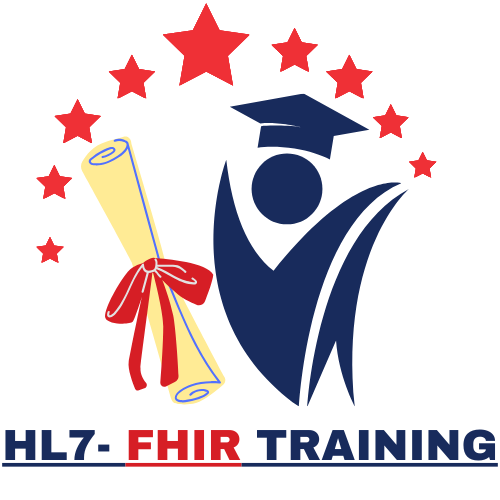In today’s healthcare landscape, interoperability is not just a buzzword—it’s a necessity. The HL7 FHIR (Fast Healthcare Interoperability Resources) standard has revolutionized how healthcare applications exchange data. Whether you’re building EHR systems, mobile health apps, or integrating APIs for patient data access, understanding the top FHIR resources is crucial for every healthcare developer.
This blog will walk you through the most commonly used FHIR resources, their practical applications, and why every FHIR developer must get familiar with them to build modern, efficient, and compliant healthcare solutions.

💡 What Are FHIR Resources?
At the core of the FHIR standard are “Resources”—modular components that represent real-world healthcare concepts such as patients, medications, encounters, lab results, and more.
Each FHIR resource is:
- Defined in a structured format (JSON or XML)
- Easily extendable and referenceable
- Designed to support RESTful APIs
- Mapped to common use cases in healthcare interoperability
For any healthcare developer, mastering these FHIR resources is the foundation for creating interoperable applications.
🏥 Top FHIR Resources Healthcare Developers Should Know
Let’s explore the essential FHIR resources used in most healthcare integration and development projects.
1. Patient
The Patient resource represents a person receiving healthcare services. It includes key demographic data like name, gender, date of birth, and contact details.
Why it matters:
Every FHIR-based healthcare application typically begins with identifying and managing patient data.
Key elements:
- name, birthDate, gender, identifier, contact
🔗 Use case: Patient registration, patient portals, and demographic exchange between EHRs.
2. Practitioner
This resource represents an individual healthcare provider, such as a doctor, nurse, or therapist.
Why it matters:
Linking encounters, observations, or prescriptions to specific providers is essential for clinical documentation and auditing.
Key elements:
- name, qualification, communication, identifier
🔗 Use case: Assigning patient encounters to providers or sending referrals.
3. Encounter
The Encounter resource captures interactions between a patient and a provider, such as visits, appointments, or admissions.
Why it matters:
Used in billing, scheduling, and clinical documentation, this resource is key for tracking care episodes.
Key elements:
- status, class, type, subject, participant
🔗 Use case: Hospital admission records, outpatient visits, and emergency room visits.
4. Observation
Observation is used to record measurements, assessments, or simple assertions. This includes vitals, lab results, and assessments.
Why it matters:
Most clinical decisions are based on observations—making this one of the most frequently used resources.
Key elements:
- code, valueQuantity, interpretation, effectiveDateTime, status
🔗 Use case: Recording blood pressure, lab test results, BMI, and more.
5. Condition
This resource represents problems or diagnoses associated with a patient.
Why it matters:
Capturing conditions helps in clinical analysis, treatment planning, and coding for billing.
Key elements:
- code, subject, onsetDateTime, clinicalStatus, verificationStatus
🔗 Use case: Chronic disease management, diagnosis documentation.
6. MedicationRequest
Used for capturing the details of a prescription issued to a patient.
Why it matters:
Integrates with pharmacy systems and medication administration records (MARs).
Key elements:
- medicationCodeableConcept, subject, authoredOn, dosageInstruction
🔗 Use case: E-prescribing, pharmacy integration, medication tracking.

7. AllergyIntolerance
Captures information about a patient’s allergies or intolerances to substances.
Why it matters:
Vital for patient safety and care planning.
Key elements:
- substance, clinicalStatus, reaction, onset
🔗 Use case: EHR alerts for known allergies, allergy documentation.
8. Immunization
Stores details about vaccines administered to a patient.
Why it matters:
Essential for population health programs, school immunization records, and travel clinics.
Key elements:
- vaccineCode, patient, occurrenceDateTime, doseQuantity
🔗 Use case: Vaccine registries, immunization tracking systems.
9. DiagnosticReport
Summarizes diagnostic findings from lab, imaging, or pathology.
Why it matters:
Provides structured clinical insight in support of diagnoses and treatment decisions.
Key elements:
- status, code, subject, result, conclusion
🔗 Use case: Integrating lab systems (LIS) with EHRs, sharing test results with patients.
10. Bundle
A Bundle is a container for a group of FHIR resources, such as when sending a transaction or returning a query response.
Why it matters:
It’s the mechanism for grouping related data and ensuring proper sequencing and relationships.
Key elements:
- type (batch, transaction, searchset), entry, resource
🔗 Use case: Submitting multiple related resources to a server (e.g., Patient + Encounter + Observation).
🛠️ Tips for Working with FHIR Resources
- Use the HL7 FHIR Resource Index to explore all available resources.
- Start with JSON format as it’s easier to read and commonly used in RESTful APIs.
- Leverage terminology services like SNOMED CT and LOINC for coding clinical data.
- Use FHIR validation tools to ensure your resource instances meet required profiles.
🔍 FHIR Resources and Interoperability
FHIR resources are not just for backend integrations—they play a critical role in SMART on FHIR apps, patient access APIs, and US Core profiles that support regulatory compliance (like the 21st Century Cures Act).
Understanding how to use these resources together enables healthcare developers to build rich, interoperable solutions that scale across providers, payers, and patient platforms.
✅ Final Thoughts
Whether you’re just starting with FHIR or are already knee-deep in healthcare integration, having a solid grasp of the top FHIR resources is a must. These components are the building blocks of any modern healthcare application, enabling seamless, standardized communication between systems.
By mastering these FHIR resource types, you’ll position yourself as a capable and future-ready healthcare developer, equipped to tackle real-world data exchange challenges with confidence.

